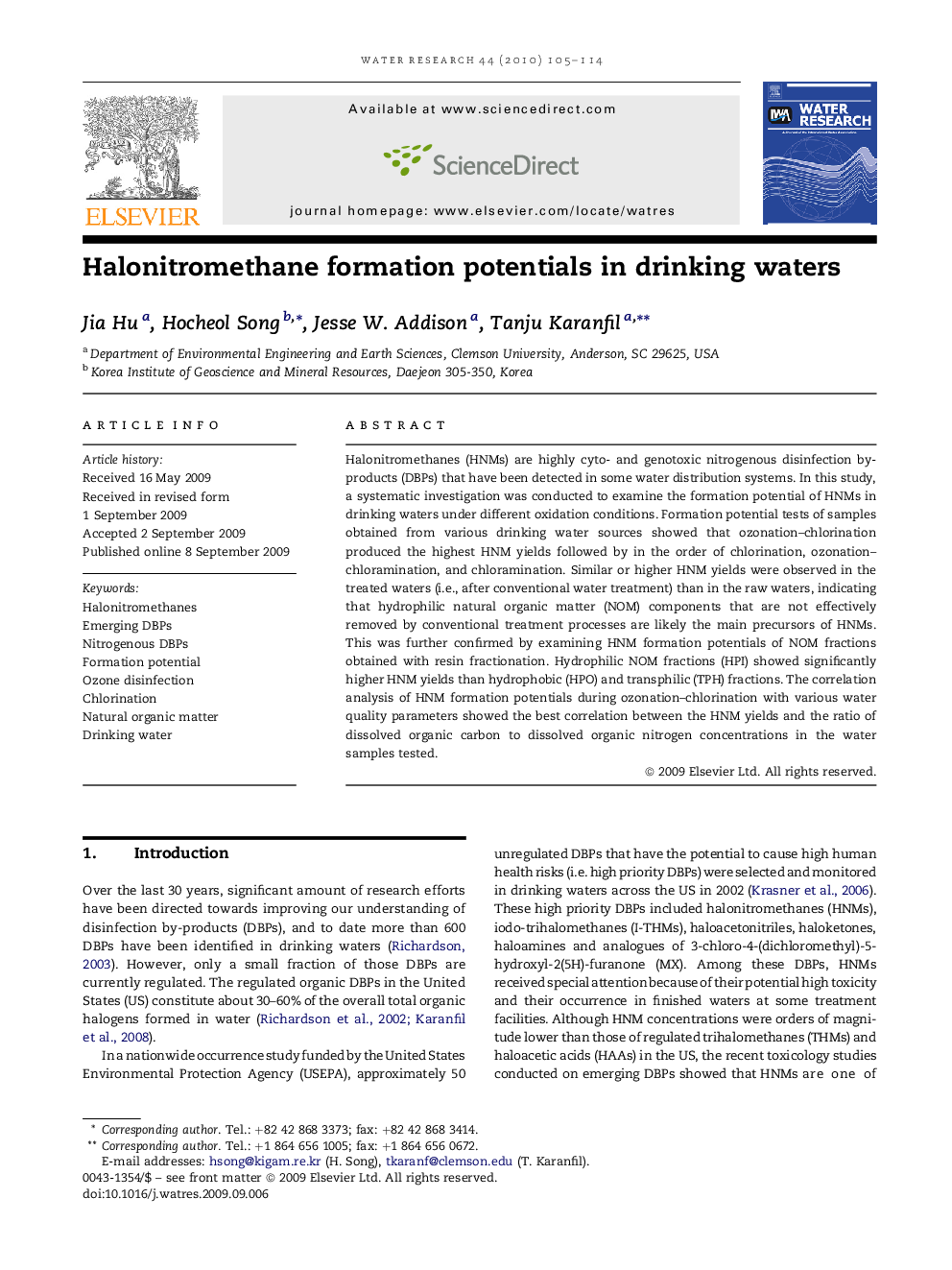| Article ID | Journal | Published Year | Pages | File Type |
|---|---|---|---|---|
| 6368184 | Water Research | 2010 | 10 Pages |
Halonitromethanes (HNMs) are highly cyto- and genotoxic nitrogenous disinfection by-products (DBPs) that have been detected in some water distribution systems. In this study, a systematic investigation was conducted to examine the formation potential of HNMs in drinking waters under different oxidation conditions. Formation potential tests of samples obtained from various drinking water sources showed that ozonation-chlorination produced the highest HNM yields followed by in the order of chlorination, ozonation-chloramination, and chloramination. Similar or higher HNM yields were observed in the treated waters (i.e., after conventional water treatment) than in the raw waters, indicating that hydrophilic natural organic matter (NOM) components that are not effectively removed by conventional treatment processes are likely the main precursors of HNMs. This was further confirmed by examining HNM formation potentials of NOM fractions obtained with resin fractionation. Hydrophilic NOM fractions (HPI) showed significantly higher HNM yields than hydrophobic (HPO) and transphilic (TPH) fractions. The correlation analysis of HNM formation potentials during ozonation-chlorination with various water quality parameters showed the best correlation between the HNM yields and the ratio of dissolved organic carbon to dissolved organic nitrogen concentrations in the water samples tested.
